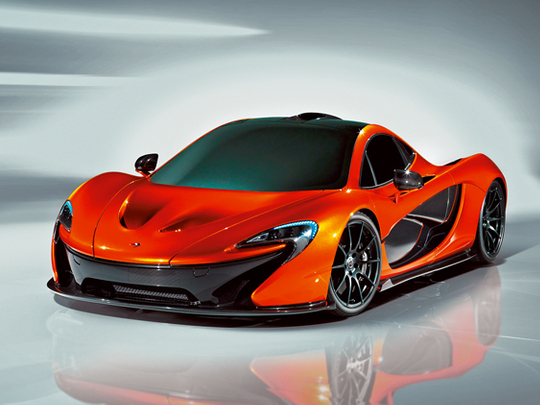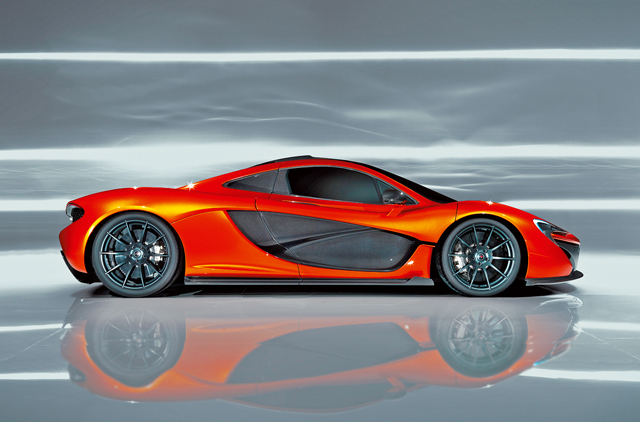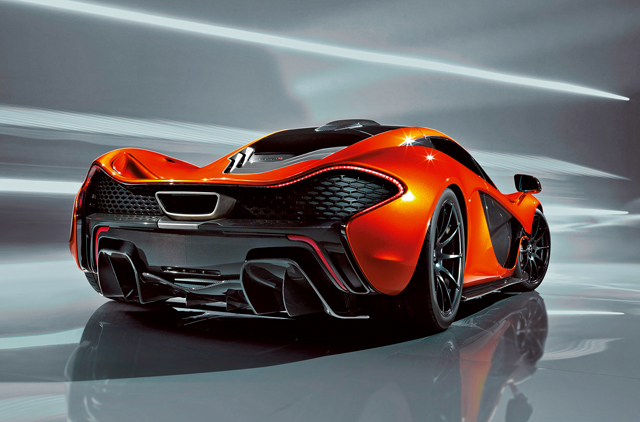
When Gordon Murray set out to create the greatest super sportscar of all time, the formula for his resultant McLaren F1 was simple: low weight, perfect balance, naturally aspirated power, rear-wheel drive, and just about zero electronics to detract from the analog experience.
The McLaren broke new ground, accelerating and handling like nothing before, and reaching a dizzying top speed of over 380kph. Murray didn’t even care about top speed, in fact, with the F1’s slippery bodywork and impeccable aerodynamics and low drag allowing the 600bhp+ BMW 6.1-litre V12 engine to keep ploughing on through the air. The legendary car designer cared mostly about handling, using the Honda NSX as inspiration, but with the McLaren’s dials turned all the way up to 11.
The car immediately entered automotive folklore upon its 1992 launch, and even today it can still dice with the best. Yes, including the Bugatti Veyron. The McLaren F1 was the first production car to use a carbon-fibre monocoque chassis. With a central driving position, the weight balance was ideal, especially since the fuel tank was placed directly behind the pilot.
With aluminium and magnesium used extensively, especially for the car’s suspension components, the whole thing ready to roll weighed in at just 1,140kg — more than a hundred kilos lighter than a Mini Cooper S. The magnificent Paul Rosche-designed V12 revved sonorously to 7,500rpm and produced its 618bhp peak right at the limit. Specific power output was 102bhp-per-litre, and even more significantly a monstrous 550bhp-per-tonne, which absolutely shames the original Veyron’s 490bhp-per-tonne.
Gordon Murray’s wondrous creation is still the benchmark, still the supercar petrolheads talk about in hushed voices with awe and respect. But Woking has waited long enough — 20 years — to shift the paradigms of automotive perfection once again, and erase all previously accepted notions of just how much a supercar can stretch the laws of physics. McLaren is creating the successor to the un-successible. And it will be the greatest achievement in human history.
If we are to believe the hype… Called the P1, even the name is a logical step forward — after all P comes after F in the alphabet, and P1 denotes pole position in Formula 1 racing. The next generation of ultimate supercars from McLaren Automotive takes its inspiration from the company’s Racing division, setting itself as simple a goal as Murray’s F1 two decades ago: to be the best driver’s car in the world on road and track.
That’s a bold target in a market soon to be populated by the Porsche 918 Spyder (a prototype of which has just lapped the ‘Ring in 7:14 minutes), and Ferrari’s Enzo successor. But make no mistake; once again McLaren isn’t interested simply in top-speed bragging rights. “Our aim is not necessarily to be the fastest in absolute top speed, but to be the quickest and most rewarding series production road car on a circuit,” says McLaren Automotive managing director Antony Sheriff. “It is the true test of a supercar’s all-round ability and a much more important technical statement.
Our goal is to make the McLaren P1 the most exciting, most capable, most technologically advanced and most dynamically accomplished supercar ever made.” That means the P1 will, like its predecessor, bank on a low kerb weight of no more than 1,300kg, utilising F1 KERS technology to boost its 3.8-litre twin-turbocharged V8 engine’s peak horsepower of around 800bhp by an additional 160bhp.
That’s 960 horses all galloping towards the rear wheels, for a 0-100kph run of well less than three seconds and a top speed of who-knows-what. Power-to-weight will shoot well over 600bhp-per-tonne, and judging by the images released so far by McLaren, the aerodynamic body shape will be more slippery than a bar of soap in a prison shower. Rules? What rules? Instead of rewriting the existing supercar guide book, McLaren is simply about to publish its very own.














